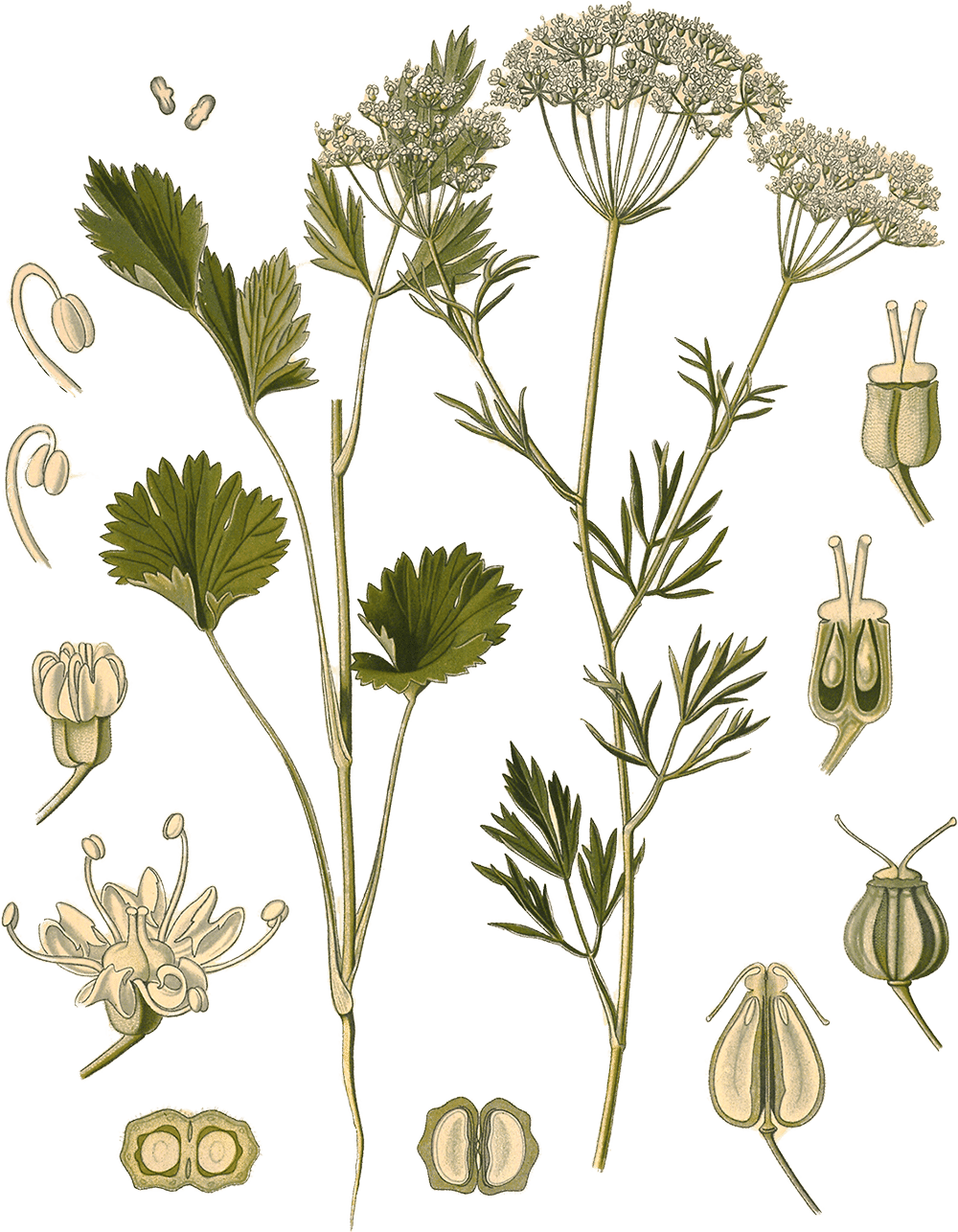Anise #

Illustration of Pimpinella anisum L. from Köhler's Medizinal-Pflanzen (1887)
Anise (Pimpinella anisum L.) is a culinary spice from the Apiaceae family,1 originating in the region(s) of nan.2 It is used for its fruit and oil, primarily for pastries, candies, liquors. Its aroma is described as licorice-like, sweet, with a heat index of 1.3
| English | Arabic | Chinese | Hungarian |
|---|---|---|---|
| anise | أنيسون | 茴芹 | ánizs |
Overview #
| id | anise |
|---|---|
| species name | Pimpinella anisum L. |
| family | Apiaceae |
| part used | fruit; oil |
| macroarea | Med.; W. Asia |
| region of origin | nan |
| cultivation | Turkey; Egypt; Spain; Russia; Italy; etc. |
| color | light brown |
| botanical database | POWO |
Etymologies #
English anise, ca. 1325 < French anis ‘anise’, 1236 < Latin anīsum ‘anise’, (dill is anēthum) < Ancient Greek ἄνισον ánison ‘anise; dill’, and other Greek dialectal variants, e.g.: ánēthon; included both plants, only later distinguished (probaby of substrate origin) < Egyptian (Ancient) jnst ‘a medicinal, edible plant (probably anise)’
Arabic أنيسون anīsūn ‘anise’, (later assimilated as yānsūn), a. 791 < Ancient Greek ἄνισον ánison ‘anise; dill’, and other Greek dialectal variants, e.g.: ánēthon; included both plants, only later distinguished (probaby of substrate origin) < Egyptian (Ancient) jnst ‘a medicinal, edible plant (probably anise)’, ca. 2030-1650 BC
Mandarin Chinese 茴芹 huíqín ‘anise’ [hui-celery ], from hui ‘anise/fennel’ + qin ‘celery’ (茴 huí could be interpreted as ‘Muslim spice’, see 茴香 huíxiāng ‘fennel’), 1841
Names #
English #
| term | source |
|---|---|
| anise | OED |
| aniseed | OED |
| sweet cumin | OED |
Arabic #
| script | term | literal | source |
|---|---|---|---|
| أنيسون | anīsūn | Wehr, 1976 | |
| حبة حلوة | ḥabba ḥulwa | sweet grain, seed | Wehr, 1976 |
| كمون حلو | kammūn ḥulw | sweet cumin | Wehr, 1976 |
| يانسون | yānisūn | Wehr, 1976 |
Chinese #
| script | term | literal | source |
|---|---|---|---|
| 茴芹 | huíqín | hui-celery | Kleeman, 2010 |
| 茴香 | huíxiāng | hui-spice | Kleeman, 2010 |
| 歐洲大茴香 | ōuzhōu dàhuíxiāng | European-big-hui-spice | Wikipedia |
| 西洋茴香 | xīyáng huíxiāng | western-ocean-hui-spice | Wikipedia |
| 洋茴香 | yáng huíxiāng | ocean-hui-spice | CEC |
POWO. (2022). Plants of the World Online (Botanical Database). Facilitated by the Royal Botanic Gardens, Kew. http://www.plantsoftheworldonline.org/ ↩︎
van Wyk, B.-E. (2014). Culinary Herbs and Spices of the World. University of Chicago Press, joint publication with the Royal Botanic Gardens, Kew. https://doi.org/10.7208/chicago/9780226091839.001.0001 ↩︎
Medicinal Spices Exhibit. (2002). UCLA Biomedical Library: History & Special Collections. https://unitproj.library.ucla.edu/biomed/spice/index.cfm?spicefilename=taste.txt&itemsuppress=yes&displayswitch=0 ↩︎